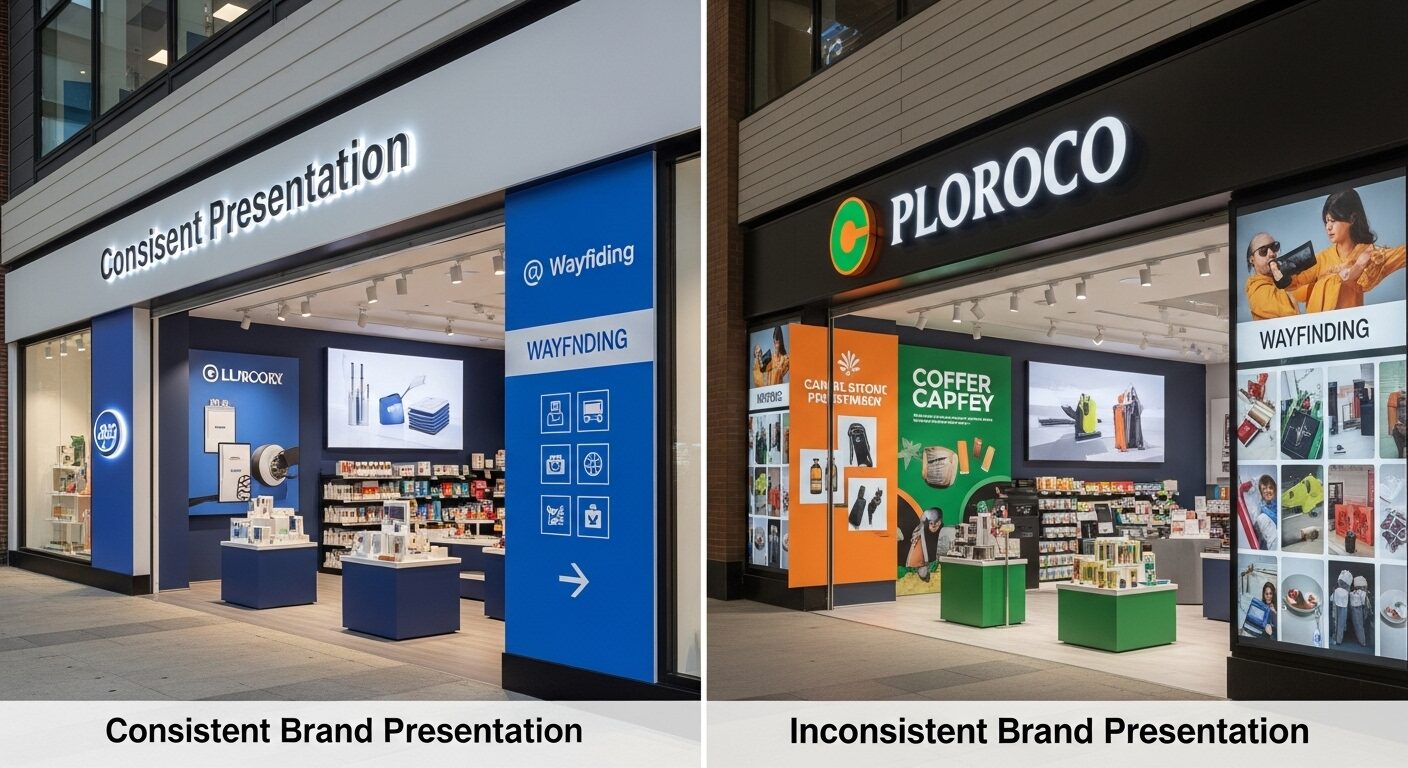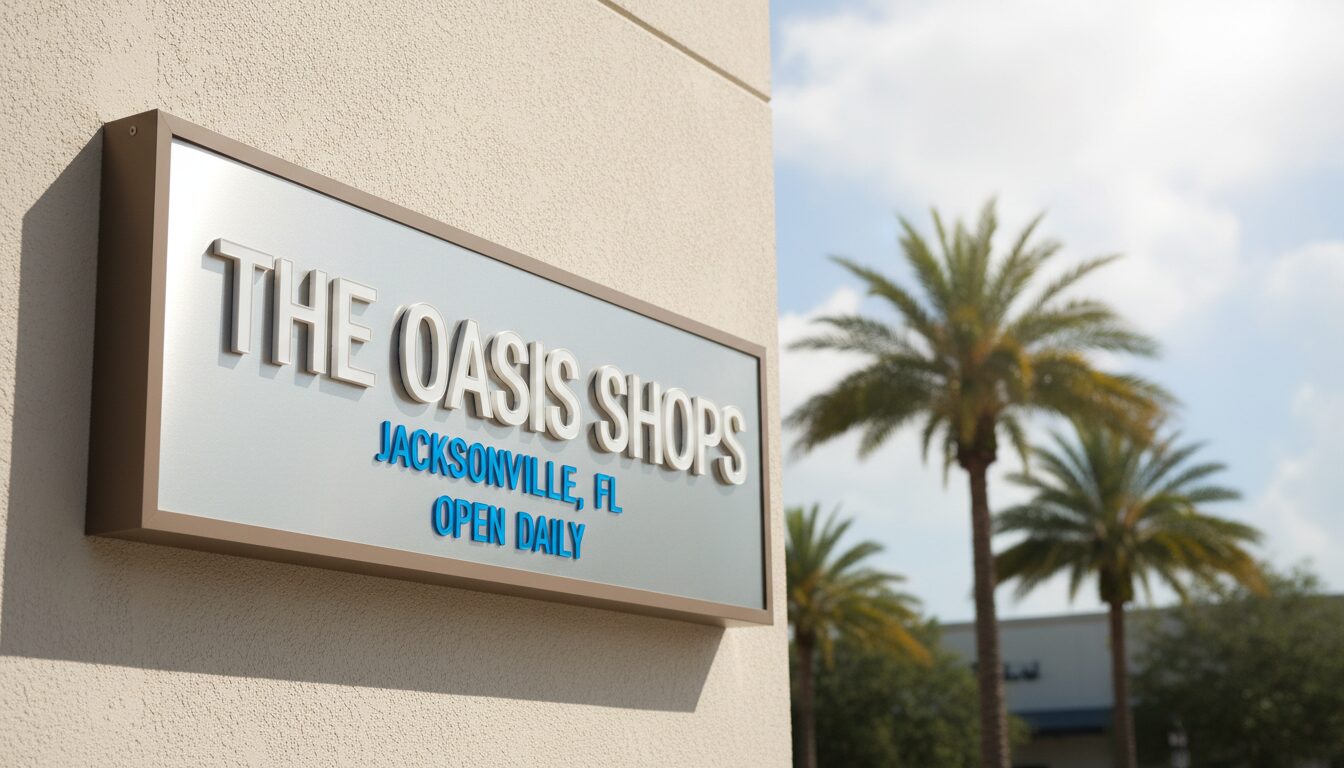Brand consistency represents one of the most powerful drivers of customer recognition and trust, with signage serving as a critical touchpoint that either reinforces or undermines the cohesive brand experience customers expect from professional businesses. When sign design aligns perfectly with overall brand identity, it creates seamless customer experiences that build recognition and confidence across all interactions.
The impact of consistent sign design extends far beyond aesthetic considerations to influence customer perception of business professionalism, reliability, and attention to detail. Inconsistent signage can create confusion about brand identity while undermining the substantial investments businesses make in developing comprehensive brand strategies across other marketing channels.
Understanding why sign design plays such a critical role in brand consistency enables business leaders to make strategic decisions that maximize their brand investment while creating competitive advantages through superior brand presentation and customer recognition.
The Foundation of Visual Brand Identity
Sign design functions as a primary vehicle for communicating brand identity in physical spaces, translating abstract brand concepts into tangible visual experiences that customers can immediately recognize and associate with specific quality expectations and brand promises.
Brand Translation Challenges arise when businesses attempt to adapt comprehensive brand guidelines developed for digital or print applications to the unique requirements of physical signage. Successful brand translation maintains core visual elements while adapting to the technical constraints and environmental factors that affect signage performance.
Color accuracy becomes particularly critical in signage applications, where outdoor lighting conditions, material limitations, and manufacturing processes can affect color reproduction. Maintaining brand color integrity requires understanding how different materials and lighting conditions influence color appearance throughout various viewing conditions.
Typography translation from digital brand guidelines to physical signage often requires adjustments for readability, scale, and manufacturing constraints while preserving the essential character and recognition value of brand fonts. Custom lettering may be necessary to maintain brand consistency when standard fonts cannot be reproduced effectively in signage materials.
Scale and Proportion Adaptation requires maintaining brand recognition while adapting visual elements to function effectively across different signage sizes and viewing distances. Brand elements that work effectively in business cards or websites may require significant modification to maintain impact and readability in large-scale exterior signage.
Logo scaling presents particular challenges, as brand marks designed for small-scale applications may lose detail or impact when enlarged for signage use. Successful brand consistency often requires developing signage-specific logo variations that maintain recognition while optimizing performance for large-scale visibility requirements.
Material and Texture Integration affects how brand elements appear in physical form, with material choices either enhancing or detracting from intended brand perception. Premium brand positioning requires material choices that reinforce quality associations, while budget-conscious brands may emphasize value through different material approaches.
Surface texture, finish quality, and manufacturing precision all contribute to brand perception through signage, with these physical characteristics creating tactile and visual associations that customers connect with overall brand quality and attention to detail.
Consistency Across Multiple Touchpoints
Brand consistency through signage becomes particularly critical for businesses with multiple customer touchpoints, where inconsistent visual presentation can create confusion about brand identity while undermining customer confidence in business professionalism and organizational competence.
Multi-Location Coordination requires systematic approaches to maintaining brand consistency across different locations, each with unique architectural constraints, local regulations, and environmental conditions that affect signage implementation. Successful coordination balances brand consistency requirements with practical implementation considerations.
Franchise businesses face particular challenges in maintaining brand consistency while accommodating local market preferences and regulatory requirements. Effective brand guidelines provide flexibility for local adaptation while preserving essential visual elements that maintain brand recognition and consistency.
Corporate businesses with multiple office locations must balance headquarters branding requirements with local market characteristics and building constraints that may affect signage options. Strategic brand guidelines anticipate these challenges while providing solutions that maintain consistency.
Interior and Exterior Integration creates seamless brand experiences that reinforce recognition and build customer confidence through consistent visual presentation from initial exterior contact through interior interactions and transactions.
Exterior signage often represents the first brand contact point, establishing expectations that interior signage and environmental design must fulfill to create cohesive experiences. Inconsistency between exterior and interior brand presentation can create confusion and undermine customer confidence.
Wayfinding signage throughout customer journey touchpoints provides opportunities to reinforce brand recognition while serving functional purposes. Consistent design treatment across all directional and informational signage builds brand familiarity while demonstrating attention to comprehensive brand management.
Digital and Physical Alignment ensures brand consistency between online presence and physical signage experiences, creating unified brand perception across all customer interaction channels that customers increasingly expect from professional businesses.
Website design elements should translate effectively to physical signage applications, with color schemes, typography, and visual style maintaining recognizable connections while adapting to different medium requirements. This alignment reinforces brand recognition across customer touchpoints.
Social media branding consistency extends to physical signage through coordinated visual approaches that create recognition across digital and physical customer interactions. Businesses that maintain consistency across all channels create stronger brand recognition and customer loyalty.
Psychological Impact of Consistent Design

Consistent sign design creates psychological benefits that extend beyond simple brand recognition to influence customer trust, perceived quality, and willingness to engage with businesses that demonstrate professional brand management competence through visual consistency.
Recognition Psychology demonstrates how familiar visual patterns create positive psychological responses that influence customer comfort levels and purchase decisions. Consistent signage builds familiarity that customers associate with reliability and professional competence.
Repeated exposure to consistent brand elements through signage creates memory pathways that facilitate brand recall and recognition during purchase decisions. This psychological advantage becomes particularly valuable in competitive markets where brand familiarity influences customer choice.
Trust Building Through Consistency occurs when customers observe attention to detail and professional brand management across all visual touchpoints. Consistent signage suggests businesses that maintain professional standards throughout their operations, creating confidence in product and service quality.
Inconsistent branding can create subconscious concerns about business competence or attention to detail that may influence customer trust and willingness to make significant purchases or enter ongoing business relationships.
Quality Perception Enhancement results from consistent professional presentation that customers associate with businesses that invest appropriately in customer experience and operational excellence. High-quality consistent signage creates expectations for corresponding quality in products and services.
The psychological principle of cognitive consistency suggests that customers expect businesses with professional visual presentation to maintain corresponding standards throughout their operations. Meeting these expectations through consistent signage builds customer confidence and loyalty.
Professional Competence Communication emerges through consistent brand presentation that suggests businesses with strategic marketing knowledge and sufficient resources for comprehensive brand management. This competence perception influences customer confidence in business capabilities.
Implementation Strategies for Brand Consistency
Achieving effective brand consistency through signage requires systematic approaches that address design standards, manufacturing specifications, installation requirements, and ongoing maintenance considerations that preserve brand integrity over time.
Brand Guidelines Development specifically for signage applications helps ensure consistent implementation across different projects, locations, and time periods. Comprehensive guidelines address technical specifications, approved materials, color standards, and installation requirements that preserve brand integrity.
Color specifications must account for different lighting conditions, material properties, and manufacturing processes that affect color reproduction in signage applications. Professional color management ensures consistent brand color appearance across all signage implementations.
Typography guidelines for signage applications should address readability requirements, manufacturing constraints, and scale considerations while maintaining brand character and recognition. Custom lettering specifications ensure consistent brand typography across all signage projects.
Quality Control Systems help maintain brand consistency through systematic review processes that evaluate signage designs, manufacturing quality, and installation results against established brand standards. Regular quality assessment prevents brand dilution through substandard implementation.
Manufacturing specifications ensure consistent quality across all signage production, with detailed requirements for materials, construction methods, finishing processes, and quality standards that preserve brand integrity throughout the signage lifecycle.
Installation standards ensure proper positioning, alignment, and mounting that maintain professional appearance and brand consistency. Poor installation can undermine high-quality design and manufacturing through crooked mounting, improper spacing, or inadequate structural support.
Maintenance and Updates preserve brand consistency over time through systematic upkeep that maintains professional appearance and prevents brand degradation through weather damage, wear, or component failure that affects brand presentation.
Regular inspection schedules identify maintenance needs before they affect brand presentation, with prompt repairs maintaining professional appearance and brand consistency. Preventive maintenance costs less than emergency repairs while preserving brand integrity.
Update procedures ensure brand consistency during signage modifications or replacements, with systematic approaches that maintain brand standards while accommodating new requirements or changing business needs.
Technology Integration and Brand Consistency
Modern signage technologies provide new opportunities for maintaining brand consistency while creating enhanced customer experiences, though they also introduce new challenges for maintaining consistent brand presentation across different technological platforms and capabilities.
Digital Signage Brand Management requires extending brand guidelines to include dynamic content standards, animation specifications, and interactive design requirements that maintain brand consistency across digital platforms. Digital content must align with static brand elements while leveraging technology capabilities.
Content management systems for digital signage should incorporate brand guidelines that automatically ensure consistent color usage, typography application, and layout standards across all digital content creation and display. Automated brand compliance reduces inconsistency risks while streamlining content creation.
Interactive Element Integration must maintain brand consistency while providing enhanced functionality that serves customer needs. Interactive features should enhance rather than conflict with established brand presentation, maintaining recognition while adding value.
Touchscreen interfaces, QR code integration, and mobile connectivity features require design approaches that preserve brand consistency while optimizing user experience and functional performance.
Smart Lighting Brand Enhancement enables dynamic brand presentation that adapts to different conditions while maintaining consistent brand recognition. Programmable lighting can enhance brand colors and create dynamic effects that reinforce brand identity without compromising consistency.
Color-changing lighting capabilities must operate within brand color palettes to maintain consistency while providing dynamic visual interest that enhances brand presentation without creating confusion about brand identity.
Measuring Brand Consistency Impact
Evaluating the effectiveness of consistent sign design requires assessment methods that capture both quantitative business results and qualitative brand perception improvements that demonstrate the value of systematic brand consistency efforts.
Brand Recognition Testing measures how effectively consistent signage builds customer recognition and recall compared to inconsistent brand presentation. Recognition studies can quantify the business value of brand consistency investments through customer awareness metrics.
Customer Perception Studies evaluate how consistent signage affects customer perceptions of business quality, professionalism, and reliability. These studies help quantify the psychological benefits of brand consistency while identifying areas for improvement.
Competitive Differentiation Analysis determines how consistent brand presentation creates competitive advantages through superior brand recognition and customer perception compared to competitors with less consistent brand presentation.
Business Performance Correlation tracks business metrics that may be influenced by improved brand consistency, including customer acquisition, retention rates, and average transaction values that may improve through enhanced brand presentation.
Frequently Asked Questions About Sign Design and Brand Consistency
How detailed should brand guidelines be for signage applications?
Brand guidelines for signage should be comprehensive enough to ensure consistent implementation across different projects and vendors while providing flexibility for technical requirements and local constraints. Guidelines should address colors, typography, spacing, materials, and quality standards with specific technical specifications.
Can businesses maintain brand consistency while accommodating local regulations?
Yes, effective brand guidelines anticipate regulatory constraints and provide approved alternatives that maintain brand recognition while meeting local requirements. Strategic planning can often find solutions that satisfy both brand consistency and regulatory compliance needs.
How do businesses balance brand consistency with cost considerations?
Brand consistency can be maintained across different budget levels through strategic material choices, simplified implementations, and phased approaches that prioritize the most critical brand elements while accommodating financial constraints without compromising essential brand recognition.
What happens when existing signage doesn’t match current brand standards?
Businesses can develop transition plans that gradually update signage to match current brand standards, prioritizing the most visible or important signage first while planning systematic updates that maintain consistency throughout the transition process.
How often should businesses review and update signage for brand consistency?
Regular brand consistency audits help identify inconsistencies before they affect customer perception, with annual reviews typically providing adequate frequency unless significant brand changes or business growth warrant more frequent assessment.
Can digital signage help or hurt brand consistency efforts?
Digital signage can enhance brand consistency through centralized content management and automated brand compliance, but it requires careful planning to ensure digital content maintains brand standards and integrates effectively with static brand elements.
Building Sustainable Brand Consistency
Sign design plays an irreplaceable role in maintaining brand consistency that builds customer recognition, trust, and loyalty while creating competitive advantages through superior brand presentation and customer experience.
The most successful brand consistency strategies treat signage as an integral part of comprehensive brand management rather than isolated design decisions, ensuring all visual touchpoints work together to reinforce brand identity and customer relationships.
Understanding the critical role of sign design in brand consistency enables businesses to make strategic investments that maximize their brand development efforts while creating lasting competitive advantages through superior customer recognition and trust.
Ready to ensure your signage supports consistent brand presentation that builds recognition and trust? Contact SignLab JAX today to discuss how strategic sign design can enhance your brand consistency while creating the professional image that drives customer confidence and business success.




